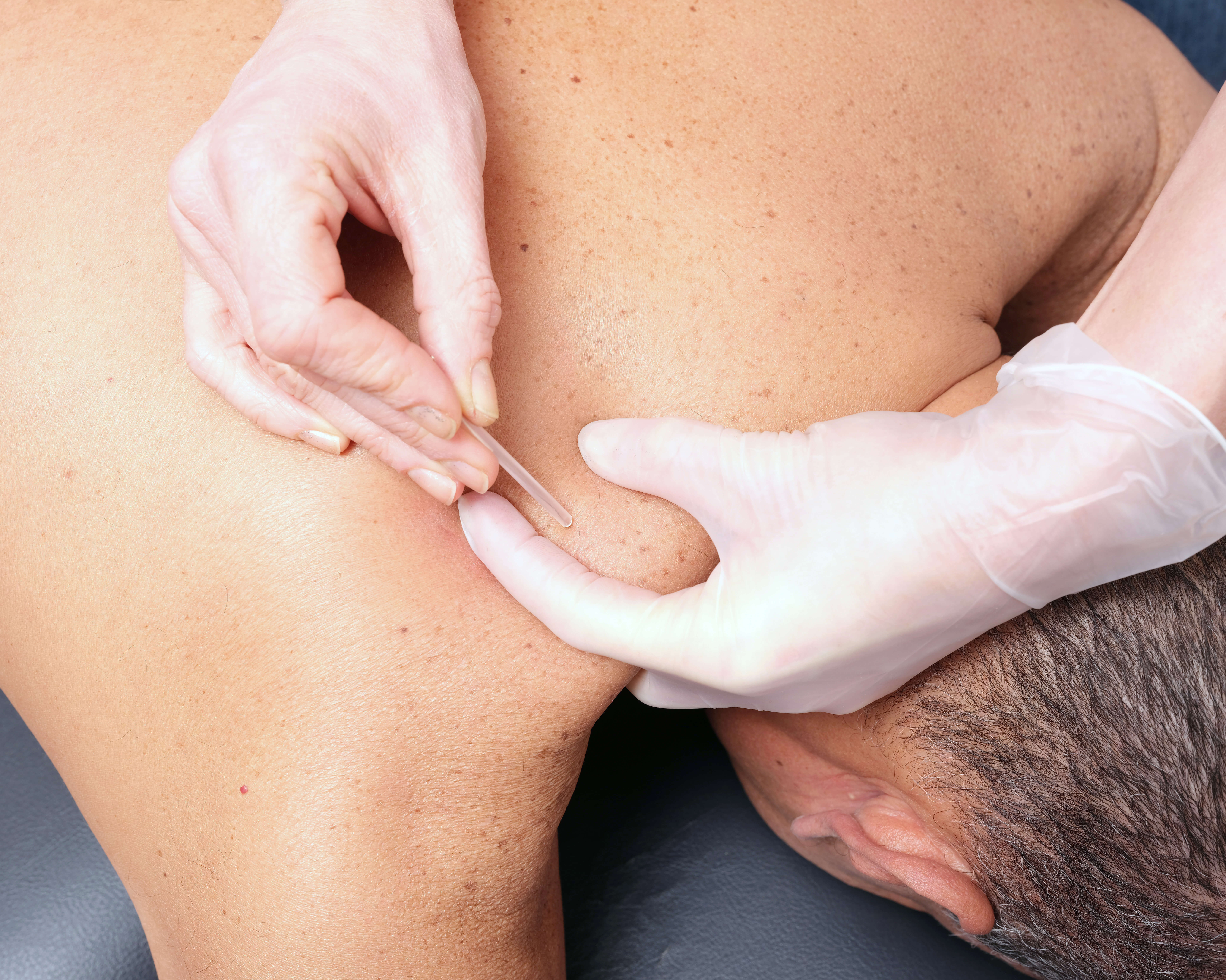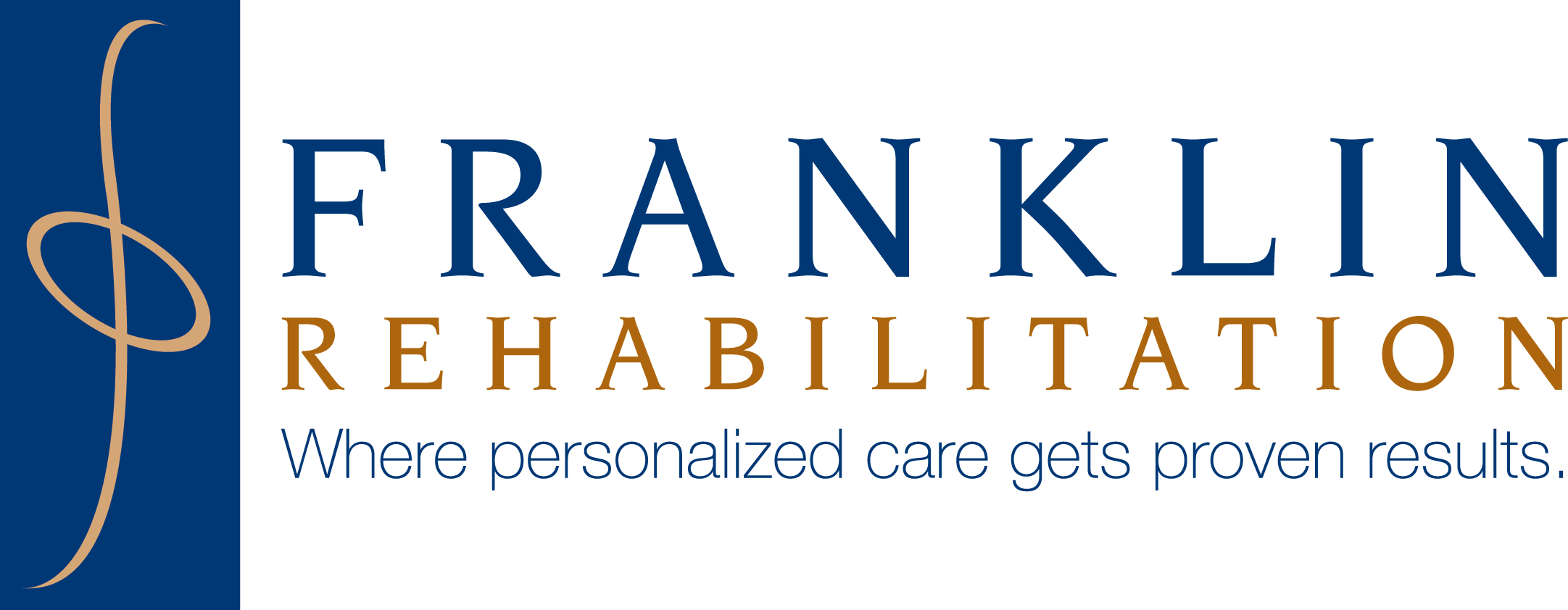Dry needling vs. acupuncture: 3 key differences

Have you ever woken up feeling like a crumpled piece of paper? Your muscles very tight and achy? Or maybe you have a pain from an old injury that just won’t go away. If you’re looking for natural ways to help manage pain and improve your mobility, you may have come across two intriguing treatments: dry needling and acupuncture.
With all the needles involved, it’s natural to wonder what exactly these therapies are and how they’re different from each other. Read on to discover the unique philosophy behind the therapies and pinpoint their key differences. By the end of this exploration, you’ll be well equipped to decide which approach may be the best for your needs to help you find pain relief and an improved overall well-being.
Dry needling 101
You can think of a physical therapist being equipped with a toolbox full of techniques to help ease pain. Dry needling can be one of the sharpest tools in their kit. A certified practitioner manually inserts thin, sterile needles into tight, knotted areas of your muscles called trigger points. These trigger points can be the culprit behind your pain and can cause the pain to radiate to other parts of your body. Dry needling aims to help deactivate these trigger points, relieve pain and restore normal muscle function.
A closer look at the science behind dry needling involves diving into:
- Trigger points — Trigger points are hypersensitive spots within a muscle that can cause pain, tightness and weakness. These spots can develop due to repetitive strain, injuries or even poor posture.
- Neuromuscular response — When a needle is inserted into a trigger point, it stimulates the nervous system. This can cause a local twitch response. It can be described as a “twitch and release.” This twitch is believed to help relax the muscle fibers and reduce pain signals sent to the brain.
- Increased blood flow — When the needle is inserted, it can trigger an inflammatory response. This response helps bring more blood flow to the area. Increased blood flow can help promote healing and reduce inflammation in the surrounding tissue.
Acupuncture: Traditional Chinese medicine
Acupuncture has a much longer history. Its use dates back thousands of years in traditional Chinese medicine (TCM). It’s based on the idea of “qi.” Qi is a vital energy that flows through channels in your body called meridians. When this flow gets disrupted, it’s believed to lead to pain and other health problems. Acupuncturists insert needles at specific points along these channels to help restore balance and promote healing.
Acupuncture is guided by core principles that include:
- Yin and yang — The concept of yin and yang represents opposing yet complementary forces that exist within the body. Imbalances between yin and yang are believed to contribute to illness.
- Five elements — Wood, fire, earth, metal and water are believed to correspond to different organs and body functions. Acupuncture treatment aims to help harmonize the elements.
- Meridians — These are invisible energy channels that qi flows through. Acupuncture points are located along these meridians.
Key differences between dry needling and acupuncture
Dry needling and acupuncture might look similar at first glance due to both involving inserting thin needles into the body. However, they have some key differences:
- Theoretical foundation — Dry needling is rooted in Western science and muscle anatomy. It focuses on targeting specific trigger points. Acupuncture stems from traditional Chinese medicine. It aims to help restore balance in the body’s energy flow to promote healing.
- Purpose of treatment — Dry needling is designed to help target musculoskeletal issues. It’s used to help conditions that involve muscle tightness, knots, spasms and pain. It can be used with physical therapy or chiropractic treatments. Acupuncture is used to help a wide variety of issues from physical and emotional to mental health issues. It aims to help restore balance within the body’s energy system. Acupuncture can be used to help conditions like chronic pain, stress, anxiety, and digestive disorders.
- Needles and techniques — Dry needling uses thin, sterile needles that are inserted quickly and often withdrawn just as quickly. Sometimes the aim is to elicit a local twitch response in the muscle. Dry needling can also be used with manual therapy or exercises to optimize outcomes. Acupuncture can use more needles that are inserted at various depths. They are also left in place for extended periods of time. Acupuncture may also incorporate other techniques with the needles, such as heat or electrical stimulation.
Understanding these key differences can help you make an informed decision about which therapy may be best suited to your needs.
Benefits of dry needling
Now that we’ve covered what the therapies are and their differences, let’s talk about the benefits of dry needling. Dry needling has been proven to help with:
- Pain relief.
- Improved mobility.
- Increased circulation.
- Reduced muscle soreness.
- Improved athletic performance.
- Reduced stress.
Conditions dry needling can help with
Dry needling can be a helpful tool for managing a variety of conditions, including:
- Neck pain — Dry needling can help alleviate pain and stiffness in the neck by targeting trigger points in the neck muscles. It can help reduce muscle tension and restore range of motion.
- Chronic back pain — Dry needling can help improve flexibility and reduce pain intensity by targeting trigger points in the back muscles.
- Tennis elbow and golfer’s elbow — Dry needling can be an effective treatment for tennis elbow and golfer’s elbow by targeting trigger points in the forearm muscles. By targeting these trigger points, it can help reduce pain and improve function.
- Headaches and migraines — Dry needling may help reduce the frequency and severity of tension headaches and migraines. It targets trigger points in the neck, shoulders and head muscles that can be associated with headache symptoms.
- Plantar fasciitis — Dry needling can help relieve pain and inflammation associated with plantar fasciitis. Trigger points in the calf muscles and plantar fascia are targeted to help promote tissue healing and improve foot function.
- Sciatica — Dry needling may help alleviate sciatic nerve pain by targeting trigger points in gluteal and lower back muscles. It can help reduce pressure on the sciatic nerve and improve symptoms like pain, tingling and numbness.
- Shoulder impingement syndrome — Dry needling can be beneficial for shoulder impingement syndrome by targeting trigger points in the shoulder and upper back muscles. It can help reduce muscle tension and improve shoulder mobility.
- Fibromyalgia — Dry needling can help provide relief for fibromyalgia by targeting trigger points in various muscles throughout the body. It can help reduce pain sensitivity and improve overall muscle function and mobility.
- Hip pain — Dry needling can help relieve hip pain caused by conditions like osteoarthritis, bursitis or muscle strains. It targets trigger points in the hip and pelvic muscles, reducing pain and improving hip function.
Finding dry needling near you
Are you thinking that the best treatment option for you is dry needling? Some things to consider when looking for a provider nearby include:
- Consult your doctor — Consulting with your doctor before you begin dry needling is important, especially if you have any underlying health conditions. If you have certain bleeding disorders or are taking medications that affect blood clotting, dry needling may not be for you.
- Look for a qualified practitioner — A certified physical therapist trained in dry needling is a wise choice. If your practitioner is certified, you can be assured they’ve had the necessary training and experience to perform dry needling safely and effectively.
- Ask questions — Don’t hesitate to ask about the practitioner’s experience with dry needling, their approach to treatment and what to expect during the session. You can also ask about their experience in using dry needling to help treat your specific condition. It’s important to feel comfortable and informed before undergoing any treatment.
- Find out about cost and insurance — Ask about the cost of sessions and if your insurance covers dry needling treatments.
- Ask about safety protocols — You’ll want to make sure the clinic follows strict hygiene and sterilization protocols. These protocols are in place to help minimize the risk of infection.
By understanding the differences between dry needling and acupuncture, you can be on your way to making an informed decision about which approach might be right for you. Explore your options, discuss your questions with your doctor and take charge of your well-being.
Experience the power of dry needling with Franklin Rehabilitation
At Franklin Rehabilitation, we’re dedicated to providing exceptional care through our expertise in dry needling physical therapy. Our team of physical therapists is committed to delivering compassionate and personalized treatment. Each plan is tailored to meet the unique needs of the individual and can include dry needling or a variety of other complementary techniques. We’ll work together to create a treatment plan that will address your specific needs and concerns to help get you back to feeling your best.
Call us or request an appointment today about dry needling therapy.
